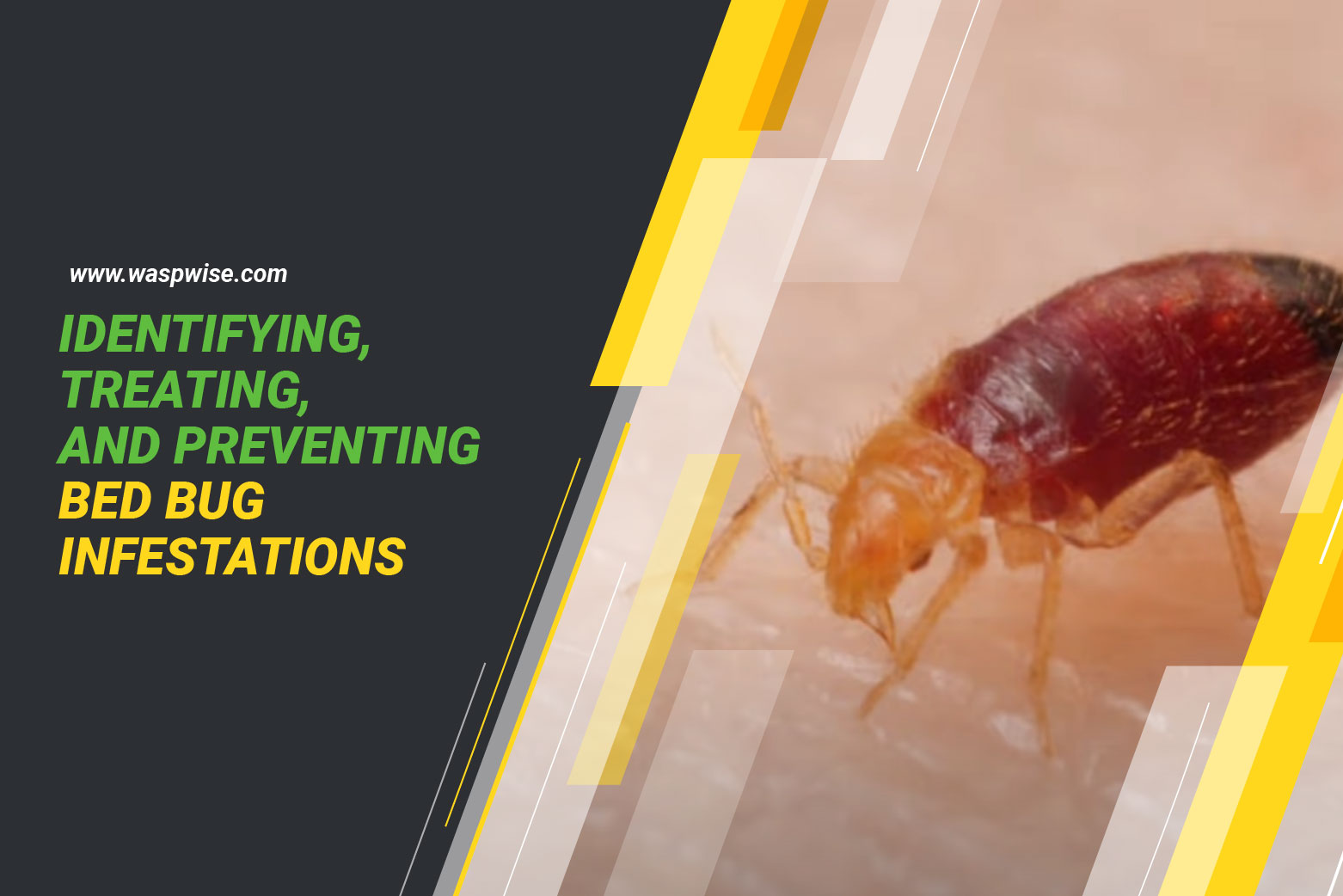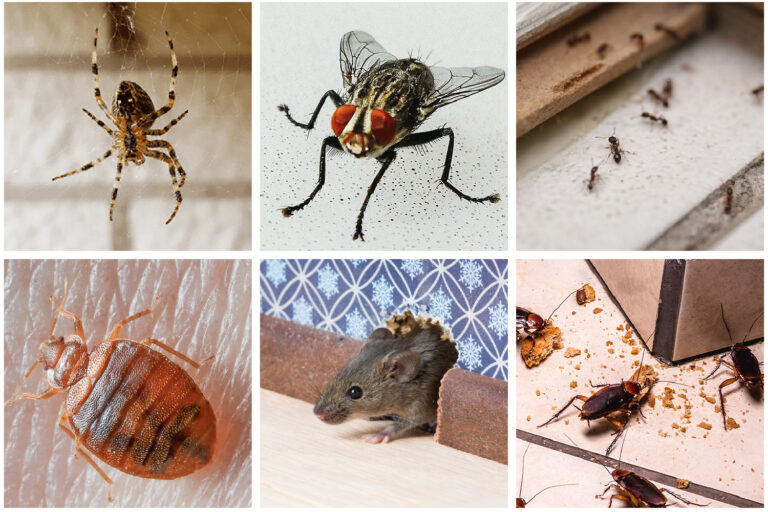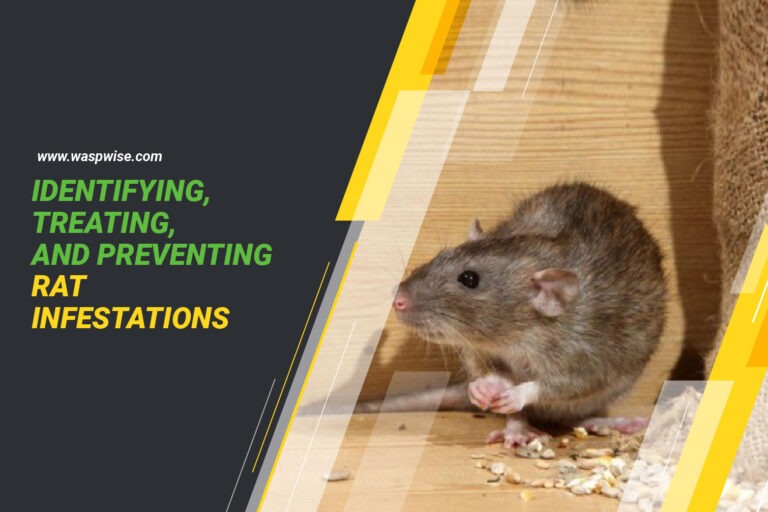BED BUGS 101: YOUR GUIDE TO IDENTIFYING, TREATING, AND PREVENTING BED BUG INFESTATIONS
Bed bugs are small, blood-sucking insects that can cause significant distress and discomfort. By understanding how to identify, treat, and prevent bed bug infestations, you’ll be equipped to tackle any potential problems that may arise.
Identifying Bed Bugs
Physical Characteristics and Appearance of Bed Bugs
Bed bugs are small, oval-shaped insects with flat bodies. They are typically reddish-brown in color but can appear darker after feeding. Adult bed bugs are about the size of an apple seed, while nymphs (immature bed bugs) are smaller and lighter in color. Their bodies are segmented, and they have six legs and antennae.
Signs of Bed Bug Infestations
Detecting a bed bug infestation early is crucial for effective control. Look out for the following signs:
- Dark spots or stains on bedding and furniture.
- Rusty or reddish stains on sheets and mattresses caused by bed bugs being crushed.
- Small, clustered bites on your body, often in a line or zigzag pattern.
Common Hiding Spots and Habitats
Bed bugs are adept at hiding in various locations, including:
- Mattresses, especially in seams and tufts.
- Box springs, bed frames, and headboards.
- Cracks and crevices in furniture, walls, and flooring.
- Luggage, backpacks, and clothing.
Health Risks and Concerns
Allergies and Skin Reactions
While bed bugs are not known to transmit diseases, their bites can cause allergic reactions and skin irritations. Common symptoms include itching, redness, and swelling at the bite site. In some cases, excessive scratching may lead to secondary infections.
Psychological Effects and Sleep Disturbances
Living with a bed bug infestation can affect your mental well-being. Sleep disturbances, anxiety, and stress are common among those dealing with these persistent pests. Seeking professional help and effective treatment is crucial for restoring peace of mind.
Preventing Bed Bug Infestations
Tips for Minimizing the Risk of Infestation
Prevention is key when it comes to bed bugs. Follow these practical steps to reduce the chances of infestation:
- Regularly vacuum your home, paying close attention to mattresses, upholstery, and cracks.
- Encase mattresses and box springs in bed bug-proof covers.
- Be cautious when acquiring used furniture or clothing—thoroughly inspect items before bringing them into your home.
Proper Hygiene Practices and Cleaning Routines
Maintaining cleanliness and good hygiene habits can help deter bed bugs:
- Wash and dry bedding, clothing, and other infested items on high heat settings.
- Reduce clutter, as bed bugs thrive in areas with numerous hiding spots.
- Regularly clean and inspect pet bedding.
Bed Bug-Proofing Your Home and Travel Precautions
Protect your home and prevent bed bug infestations while traveling:
- Seal cracks and crevices in walls, flooring, and furniture.
- Use bed bug-proof encasements for luggage during travel.
- Inspect hotel rooms thoroughly before settling in.
Detecting Bed Bugs
Conducting Thorough Inspections
Regular inspections are crucial for early detection:
- Examine bedding, furniture, and walls for any signs of bed bugs.
- Use a flashlight to search for live bugs, shed skins, or fecal stains.
Using Detection Tools and Techniques
There are several methods to detect bed bugs:
- Install bed bug interceptors on furniture legs to trap crawling bed bugs.
- Use a magnifying glass to inspect areas closely for eggs and nymphs.
- Employ a bed bug-sniffing dog for accurate detection in larger spaces.
Signs of Early Infestations and Proactive Measures
Early intervention is key to preventing a full-blown infestation:
- Act promptly if you notice even a single bed bug.
- Wash and dry infested items on high heat or dispose of heavily infested belongings.
Treating Bed Bug Infestations
DIY Methods for Small Infestations
For minor infestations, try these do-it-yourself approaches:
- Thoroughly clean and vacuum infested areas, disposing of the vacuum bag immediately.
- Use hot steam or heat treatments to kill bed bugs and their eggs.
- Apply bed bug insecticides or natural alternatives as directed.
Professional Extermination Options
For larger or persistent infestations, it is advisable to seek professional help:
- Consult a licensed pest control professional experienced in bed bug extermination.
- Consider heat treatments, fumigation, or chemical treatments for effective eradication.
Safety Precautions and Considerations
Ensure your safety during the treatment process:
- Follow all instructions and warnings on insecticide labels.
- Temporarily vacate the premises during professional treatments if required.
- Protect yourself by wearing gloves and masks when using chemicals.
Post-Treatment Measures
Cleaning and Sanitizing After Bed Bug Treatment
After treatment, follow these steps to minimize re-infestation:
- Thoroughly clean and vacuum treated areas.
- Launder bedding and clothing on high heat settings.
- Seal cracks and crevices to prevent re-infestation.
Preventing Re-Infestations
Stay vigilant and implement preventive measures:
- Continue regular inspections to catch any potential re-infestation early.
- Avoid bringing secondhand furniture or items of unknown origin into your home.
Monitoring and Ongoing Maintenance
Maintain a bed bug-free environment by being proactive:
- Monitor for any signs of bed bugs regularly.
- If you detect a new infestation, address it promptly to prevent a major outbreak.
Dealing with Bed Bugs in Different Settings
Bed Bugs in Residential Areas
Tips for tackling bed bug infestations in homes:
- Consult professional exterminators for effective treatment.
- Inform neighbors if you reside in an apartment building to prevent spreading.
Bed Bugs in Hotels and Accommodations
Protect yourself while traveling:
- Inspect hotel rooms thoroughly before unpacking.
- Store luggage and suitcases on elevated racks or sealed plastic bags to prevent exposure to bed bugs.
Bed Bug Infestations in Public Spaces
Be cautious in public areas where bed bugs can be present:
- Avoid placing personal items on the floor or shared furniture.
- Inform management if you notice signs of bed bugs in public spaces.
Frequently Asked Questions
Q: How long do bed bugs live?
A: Bed bugs have varying lifespans depending on environmental conditions and access to a blood meal. Adult bed bugs can live anywhere from 4 to 6 months on average. However, they can survive for up to a year or longer under favorable conditions.
Q: Can bed bugs jump or fly?
A: No, bed bugs cannot jump or fly. They are wingless insects with a limited ability to crawl. Bed bugs primarily rely on crawling and hitchhiking to move from one location to another. They can crawl relatively quickly across floors, walls, and furniture.
Q: Are bed bug bites dangerous?
A: While bed bug bites are not known to transmit diseases, they can cause discomfort and allergic reactions in some individuals. Common symptoms include itching, redness, and swelling at the bite site. Excessive scratching may lead to secondary skin infections. If you experience severe reactions or have concerns, consult a healthcare professional for proper evaluation and treatment.
Conclusion
In this comprehensive guide, we have provided you with valuable insights on identifying, treating, and preventing bed bug infestations. Understanding their habits and taking proactive measures can protect yourself and your home from these unwelcome pests. Early detection and professional assistance are key to effectively eliminating bed bugs and restoring peace of mind.







